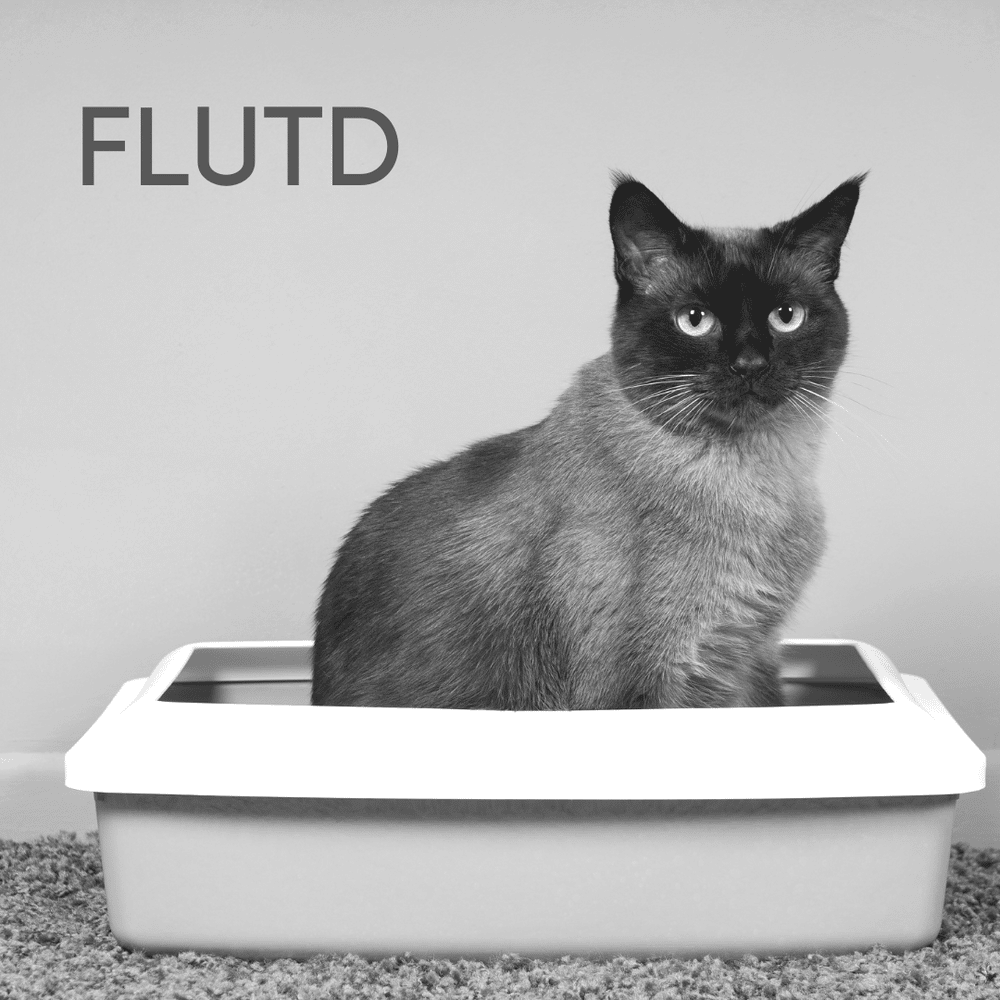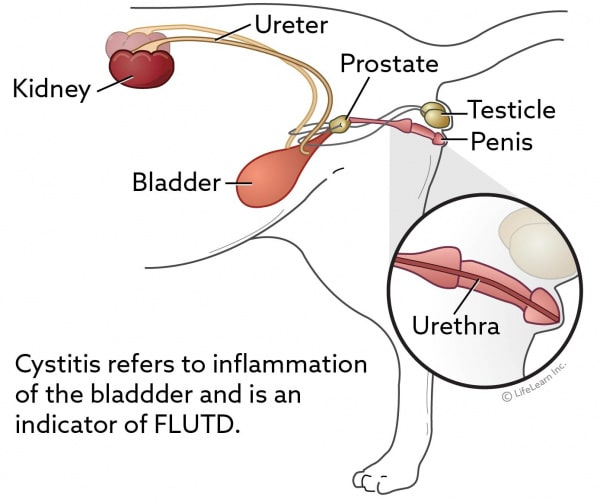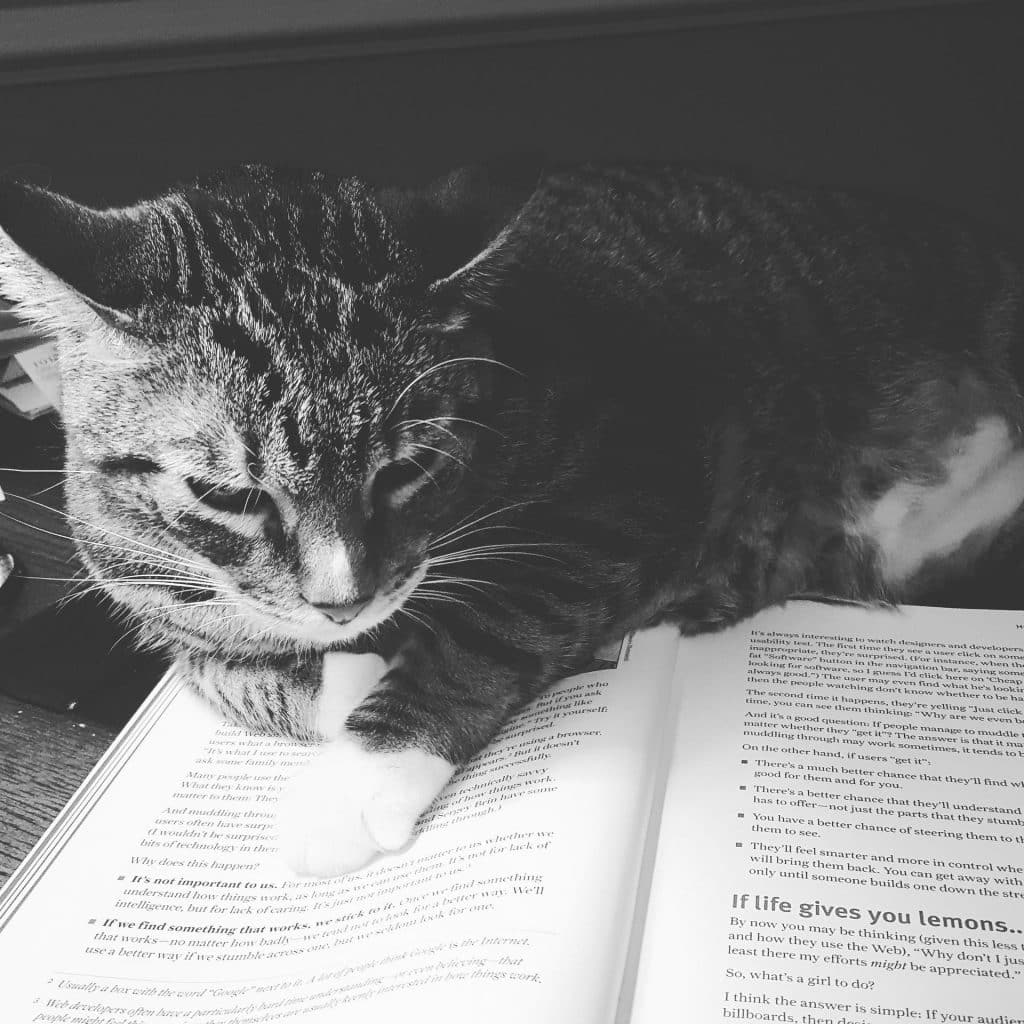Feline Lower Urinary Tract Disease Life Expectancy
Once your vet has put your cat on a special diet and she remains healthy for about nine months, the vet will examine the cat and take her off this special diet.
Every 6 months, your cat should be checked to monitor her treatment progress.
Cats can live a normal life with proper treatment and enjoy high-quality life.
Prognosis For Feline Lower Urinary Tract Disorder
Generally, the prognosis for survival after UO is very good, however severity of hyperkalemia and presence of anemia are both negative prognostic indicators. The most impactful aspect of this condition is the high incidence of recurrence, which has been reported to be as high as 11% within 24 hours, 24% within one month, and 58% in 6 months.
Prior to initiation of treatment, owners must be counseled regarding the risk of recurrence, as this may be very impactful to their decision-making process. For some, euthanasia is a consideration due to financial and quality-of-life concerns. Though this can be a disheartening decision for a âfixableâ condition, we must me empathetic to the stressors this condition inflicts upon both cat and owner. If recurrence of UO occurs following standard treatment, consideration should be given to performing a perineal urethrostomy to prevent future obstructions.
A general rule-of-thumb is to recommend PU after three episodes of UO, but earlier intervention is reasonable in high-risk cats. Perineal urethrostomy should be decided on carefully, as there is significant risk for recurrent urinary tract infections or urethral stricture, but 88% of owners report their cats had good quality of life following PU.
What Are The Signs
Most cats with FLUTD will have blood in the urine and discomfort while urinating. The discomfort is usually mild, but can become much worse if it is not treated. Other signs include:
- Frequent urination or straining, often only passing a small amount
- Meowing or howling during urination
- Foul-smelling or cloudy urine
- Frequent licking of the genital area
- Inappropriate elimination
Recommended Reading: What Are The Most Common Causes Of Urinary Tract Infections
What Is A Flutd
FLUTD is a common reason why cats go to the veterinarian. Generally speaking, FLUTD covers a wide range of mild to serious disorders having to do with a cats urinary tract below the kidneys, including the ureters, bladder, and urethra.
In cats less than 10 years of age, the most common cause of FLUTD is feline idiopathic cystitis , followed by bladder stones, and then urethral plugs, which can cause life threatening bladder obstructions.
In senior cats older than 10 years of age, FLUTD is most commonly caused by urinary tract infections and bladder stones.
Dr. Sara Ochoa, a veterinarian with Whitehouse Veterinary Hospital says that the lining of the bladder plays a role in the development of FLUTD caused by FIC.
The urinary bladder is lined with glycoproteins called PSGAGs. This material basically insulates the tissue of the bladder from the urine it contains, she says. Urine can vary greatly in pH and can contain abrasive crystals in addition to assorted toxins and irritants that the kidneys have removed from the bloodstream.
If the lining of the bladder becomes compromised, it can cause the bladder to become directly exposed to the urine, and inflammation can result.
Feline Lower Urinary Tract Obstruction

Feline lower urinary tract disease encompasses urethral plugs , feline interstitial cystitis , bacterial cystitis , and urolithiasis .811 Cats at most risk of FLUTD are kept indoors, male, overweight, and fed on dried diets.12 Bacterial cystitis is more commonly seen in elderly cats with renal compromise which prevents concentration of the urine.13 Clinical signs of FLUTD include inappropriate urination, stranguria, hematuria, dysuria, and pollakiuria progressing to include various systemic signs with complete obstruction. Males have a much higher risk of blocking. The diagnostic approach depends on the frequency and severity of episodes but should include urine analysis and culture even on first presentation. Obstructed cats require serum biochemistry profiles with electrolytes to allow stabilization of cases with hyperkalemia or marked azotemia prior to sedation or anesthesia. Risk factors for mortality include hypocalcemia and hyperkalemia.12
Other complications reported following perineal urethrostomy include urinary tract infection, stricture formation, periurethral urine extravasation, and stoma dehiscence. The incidence of postoperative urinary tract infection is reported to be from 2350%.1518 The range in results may be due to the fact that the infections are often asymptomatic and self-limiting, though in chronic cases struvite urolithiasis can result.19
Amanda Callens, Joseph W. Bartges, in, 2016
Also Check: Foods To Help Urinary Tract
Quantitative Urine Culture And Susceptibility Testing
Urine for culture must be collected by cystocentesis. Because UTIs are a relatively uncommon cause of FLUTD in young adult cats, the decision of whether to culture may be based on factors such as owner finances and the need to have the cat return for repeat urine collection if signs persist. A urine culture is indicated before concluding a patient has FIC, since this is a diagnosis of exclusion.
Urine culture and susceptibility testing are indicated if pyuria and bacteriuria are present on urinalysis to confirm the diagnosis and guide therapy. Studies have identified other risk factors for feline UTIs if the patient has one of these risk factors, urine culture is warranted.
How Can I Protect My Cat From These Diseases
To help protect your cat from getting a lower urinary tract disease, be sure to:
- Meet your cats environmental enrichment needs, such as having a safe and secure place to retreat, opportunities for play, and positive human interaction.
- Clean your cats litter box every day.
- Provide more than one litter box than the number of cats in your household, if you have more than one cat.
- Always keep water available for your cat. Some cats prefer running water such as with a fountain.
- Keep your veterinarian informed about how things are going. Every cat has his own personality, so what works for one may not work for another. This is one of the many reasons why it is important for you to visit your veterinarian for routine examinations.
Contributed by Dr. Susan Gogolski, DVM, DABVP Dr. Tony Buffington, DVM, PhD, DACVN and Dr. Dennis Chew, DVM, DACVIM
Recommended Reading: Urinary Tract Pain Relief Otc
Symptoms Of Flutd In Cats
Spotting the symptoms of FLUTD early on in your cat is one of the best ways to get the treatment necessary to help him feel better quickly.
The overarching symptom of feline lower urinary tract disease is painful or difficult urination. That pain can manifest itself in other outward symptoms that pet parents should be on the lookout for, including:
What Cats Are Affected By Feline Lower Urinary Tract Disease
FLUTD can affect cats of any age, breed, or sex, but cases are more common in the following:
- Middle-aged cats
- Cats that are confined indoors or have little access outdoors
- Cats on a dry or kibble diet
Factors that increase a cats risk of developing FLUTD include being in a multi-cat household, exposure to emotional or environmental stressors, and sudden changes in the households daily routine.
Recommended Reading: Cranberries For Preventing Urinary Tract Infections
Case Report: Application And Limitations Of A Plant
- 1Department of Clinical Studies, Ontario Veterinary College, University of Guelph, Guelph, ON, Canada
- 2Department of Population Medicine, Ontario Veterinary College, University of Guelph, Guelph, ON, Canada
A 2-year-old male castrated domestic shorthair cat was presented for recommendations for dietary management of chronic FLUTD using a strictly plant-based diet as per the stipulations of the cat’s owner. The cat had a history of urethral obstruction of unknown etiology, persistent marked struvite crystalluria, and persistent inappropriate elimination. Commercial plant-based products meeting the nutritional recommendations for maintenance of adult cats with the lowest concentration of struvite precursors were identified, but the cat would not eat them. At the request of the client, a homemade plant-based diet was formulated with the intention of increasing water intake and promoting acidic, dilute urine. Urine concentration was able to be decreased somewhat and struvite crystalluria resolved, but the urine remained more alkaline than intended. The cat clinically improved and no further FLUTD episodes were reported by the client.
What Is The Treatment For Flutd
This depends on the underlying cause. For example:
- Bacterial infections of the lower urinary tract usually respond well to antibiotic therapy. See handout “Urinary Tract Infections in Cats” for further information.
- If a cat develops a blocked urethra, emergency treatment is required to remove the blockage. Usually the cat will be given a short-acting general anesthetic and the urethra will be flushed or catheterized. Urethral obstruction occurs almost exclusively in male cats. Other treatment options may be recommended based on your cats specific blockage.
- If bladder stones or uroliths are present, they will have to be removed. Depending on their type, they may be able to be dissolved by using a special diet or dietary additive, or they may require surgical removal. In some cases, this can be determined by the results of a urinalysis. See handout “Bladder Stones in Cats” for further information.
“Treatment has to be tailored to the individual cat.”
There is no universal treatment for FLUTD. Each case has to be investigated to determine the underlying cause, and then the treatment has to be tailored to the individual cat. Sometimes despite appropriate tests and treatment, clinical signs may still recur, requiring further therapy and diagnostic testing.
Also Check: How Does A Pregnant Woman Get A Urinary Tract Infection
Inpatient Treatment For Urinary Obstruction
Aggressive IV fluid therapy is often necessary, especially in patients with severe azotemia and electrolyte derangements. Once the obstruction has been relieved, the clearance of excess volume and solutes creates an osmotic diuresis resulting in the notorious âpost-obstructive diuresisâ. A post-obstructive diuresis is defined as urine production in excess of 2ml/kg/hr following relief of an obstruction, but it should be noted that urine output can increase up to 10-fold in severe cases, leading to substantial fluid losses. If adequate fluid therapy is not administered to account for this loss, dehydration will occur. Quantification of urine output can help guide fluid therapy once the cat is rehydrated. Serial patient weights are also immensely helpful in assessing rehydration during hospitalization.
Management Of Feline Lower Urinary Tract Disorder

Feline Lower Urinary Tract Disorder describes a clinical syndrome which manifests as pollakiuria, stranguria, and hematuria. Cats also frequently develop a habit of inappropriate elimination, which can hamper the human-animal bond and may result in relinquishment or euthanasia, making understanding of how to treat this a disorder of crucial importance.
It is estimated that 5% of cats develop FLUTD, with equal representation between males and females. However, due to anatomical differences, there is a greater impact on males as the condition can progress to urinary obstruction, which can be fatal without prompt treatment. Young to middle-aged cats are predominantly affected, while cats over 10 years of age are rarely affected by FLUTD. Older cats with FLUTD symptoms are significantly more likely to be affected by urinary infections, urolithiasis, and neoplasia.
Don’t Miss: Does Urinary Tract Infection Cause Pain
How Flutd Is Diagnosed In Cats
Considering that there are many potential causes of FLUTD, diagnosis can be a challenge. In the hospital, your cat will undergo a thorough physical exam. Your vet may also recommend several laboratory tests.
- Urinalysiscan help evaluate urine pH and concentration, and determine if there is bleeding, inflammation, infection, and crystals in the urineUrine culture
- X-raysof the urinary bladder and urethra
- Ultrasoundof the bladder to help identify the presence of bladder stones or changes in the bladder structure
- Biopsy of the bladder wall
Warning Signs And Symptoms Of Urinary Tract Disease
If your cat exhibits any of the warning signs of FLUTD, contact your veterinarian immediately. Especially if your cat is not urinating freely, a urinary blockage may be the cause and this condition may be life threatening. Consult your veterinarian immediately.
Signs of feline bladder health problems
- Urinating outside of the litter box
- Straining when urinating
- Lack of energy or interest in normal activities
You May Like: How Can I Cure A Urinary Tract Infection Naturally
Causes Of Feline Lower Urinary Tract Disease
While anatomical changes, obesity, diet, and genetics can increase the risk of urinary tract infections and bladder stones in cats, feline idiopathic cystitis is a more complicated diagnosis.
Leading studies suggest there is a connection between FLUTD symptoms and stress or perceiving a threat in the environment. Common things that you may not see as stressors might cause a lot of stress for your cat, such as certain scents, noises, and even furniture changes. The source of stress may be more obvious, as wellstray cats outside, new babies, losing a family member, and so on. Were still not sure exactly how these stress events and situations cause physical changes in a cats bladder.
Most, if not all, cases of FIC require some form of environmental management and stress/anxiety relief to resolve the symptoms.
Urinary Health Questions To Ask Your Veterinarian
Recommended Reading: How To Heal Urinary Tract Infection Without Antibiotics
Feline Lower Urinary Tract Disease
Severity: Life stage:
- FLUTD covers a range of mild to serious disorders having to do with a cats lower urinary tract.
- In cats under 10, the most common cause of FLUTD is feline idiopathic cystitis .
- In senior cats, FLUTD is most commonly caused by urinary tract infections and bladder stones.
- The main symptom of feline lower urinary tract disease is painful or difficult urination.
- Treatment for your cats FLUTD often depends on the specific symptoms.
We try to keep our cats healthy, but the occasional illness can unfortunately creep in. One of the more common problems pet parents see in cats is something called Feline Lower Urinary Tract Diseaseor FLUTD.
In fact, Dr. Jim D. Carlson, a holistic veterinarian and owner of Riverside Animal Clinic and Holistic Center, estimates that around 20 to 25 percent of cats may develop signs of FLUTD at some point in their lives.
Heres what every cat owner should know about FLUTD in order to spot the symptoms and get their cats started on a veterinary-recommended treatment program.
Stress And Feline Urinary Tract Diseases: Prevention And Treatment
Feline urinary tract disease refers to infections affecting the lower urinary tract of cats, especially the urethra or bladder. There are 10 of these disorders, and most of them present almost similar symptoms. FLUTD symptoms range from mild to critical.
All cats can be prone to FLUTD, but the disease affects male cats more than female cats. Additionally the disorder is highly prevalent in overweight middle-aged cats that get little to no exercise. If left unchecked, these disorders can lead to the production of blood and tiny crystals in the urine.
Although FLUTD is tough to diagnose casually, there are tell-tale FLUTD symptoms that pet owners should be on the lookout for. For instance, uncontrolled licking of the genitalia, prolonged urinating attempts, and blood in the urine are some common signs of FLUTD. A visit to a vet is warranted whenever some of these signs occur.
In this write-up, we give in-depth coverage of feline urinary tract diseases, including the most common causes of UTI in cats, the signs of UTI in cats, and the relationship between stress and FLUTD. Let’s dive right in.
Also Check: Bactrim For Urinary Tract Infection
What Is The Prognosis For Fic
Recurrence of the condition can be common. Medical treatment may help reduce the frequency or improve clinical signs, thus relieving your cat’s discomfort. The main thing to be aware of is to watch for the development of clinical signs, and, more importantly, be aware of changes in the environment that may trigger a recurrence due to stress. FIC cats can be very sensitive to these changes thankfully, most cat owners are aware that the cat in question has an anxious or sensitive personality and are mindful of watching for flare-ups.
What Causes Feline Lower Urinary Tract Disease

There are a few different causes of FLUTD, the most common of which is idiopathic cystitis.
This is typically diagnosed by ruling out other causes of urinary disease, such as a bladder infection, by performing a urine test at the veterinary clinic, says Carlson.
FLUTD is also the most frequent hereditary disposition observed in practice, according to the West Suburban Humane Society, with Persian cats being at an increased risk. Anecdotally speaking, Carlson says that his experience has also been that far more male cats tend to suffer from FLUTD than female cats.
Other common causes of feline lower urinary tract disease include stress-related and environmental issues, says Ochoa, including things like:
- Stress among the humans in the home
- The introduction or removal of another human or animal to the cats environment
- Disruptive construction in the home or outdoors
- Changes to the weather or natural events
- A recent move to a new home
- A change to a new type of food or a new brand of food
- A notable change in the pet parents schedule and availability
- Not having enough resources for cats in multicat households
- Dirty litter boxes
- Changing the litter to something the cat doesnt like
- Bullying cats or interact aggression in a multicat household
- No opportunity to engage in natural cat behaviors, such as hunting or scratching
With a blockage, however, there is usually something obstructing the cats urethra, making it nearly impossible for them to actually urinate.
Recommended Reading: Cvs Urinary Tract Infection Medicine